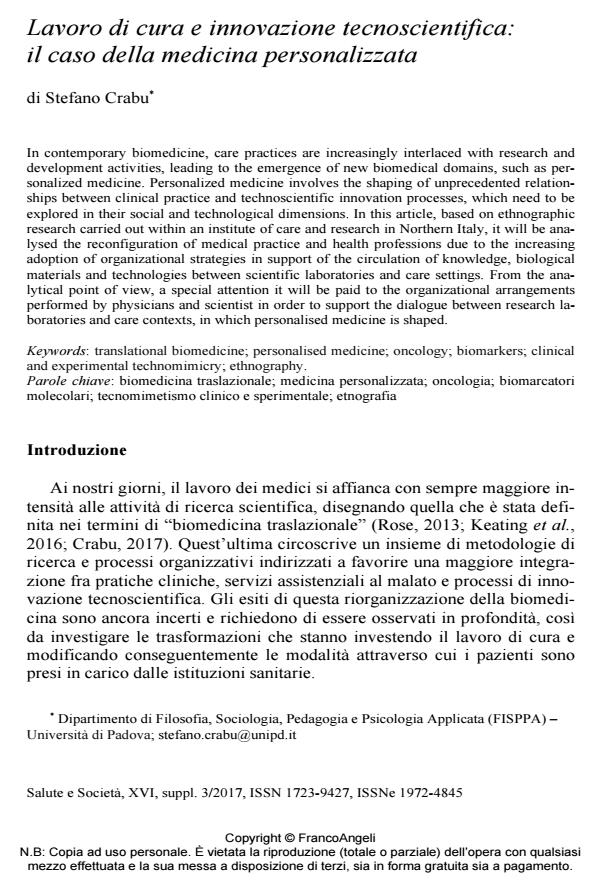Lavoro di cura e innovazione tecnoscientifica: il caso della medicina personalizzata
Titolo Rivista SALUTE E SOCIETÀ
Autori/Curatori Stefano Crabu
Anno di pubblicazione 2017 Fascicolo 2017/3-Suppl.
Lingua Italiano Numero pagine 17 P. 197-213 Dimensione file 106 KB
DOI 10.3280/SES2017-SU3013
Il DOI è il codice a barre della proprietà intellettuale: per saperne di più
clicca qui
Qui sotto puoi vedere in anteprima la prima pagina di questo articolo.
Se questo articolo ti interessa, lo puoi acquistare (e scaricare in formato pdf) seguendo le facili indicazioni per acquistare il download credit. Acquista Download Credits per scaricare questo Articolo in formato PDF

FrancoAngeli è membro della Publishers International Linking Association, Inc (PILA)associazione indipendente e non profit per facilitare (attraverso i servizi tecnologici implementati da CrossRef.org) l’accesso degli studiosi ai contenuti digitali nelle pubblicazioni professionali e scientifiche
In contemporary biomedicine, care practices are increasingly interlaced with research and development activities, leading to the emergence of new biomedical domains, such as personalized medicine. Personalized medicine involves the shaping of unprecedented relationships between clinical practice and technoscientific innovation processes, which need to be explored in their social and technological dimensions. In this article, based on ethnographic research carried out within an institute of care and research in Northern Italy, it will be analysed the reconfiguration of medical practice and health professions due to the increasing adoption of organizational strategies in support of the circulation of knowledge, biological materials and technologies between scientific laboratories and care settings. From the analytical point of view, a special attention it will be paid to the organizational arrangements performed by physicians and scientist in order to support the dialogue between research laboratories and care contexts, in which personalised medicine is shaped.
Parole chiave:Biomedicina traslazionale; medicina personalizzata; oncologia; biomarcatori molecolari; tecnomimetismo clinico e sperimentale; etnografia
- Science, Technology and Society Giampietro Gobo, Valentina Marcheselli, pp.265 (ISBN:978-3-031-08305-1)
Stefano Crabu, Lavoro di cura e innovazione tecnoscientifica: il caso della medicina personalizzata in "SALUTE E SOCIETÀ" 3-Suppl./2017, pp 197-213, DOI: 10.3280/SES2017-SU3013